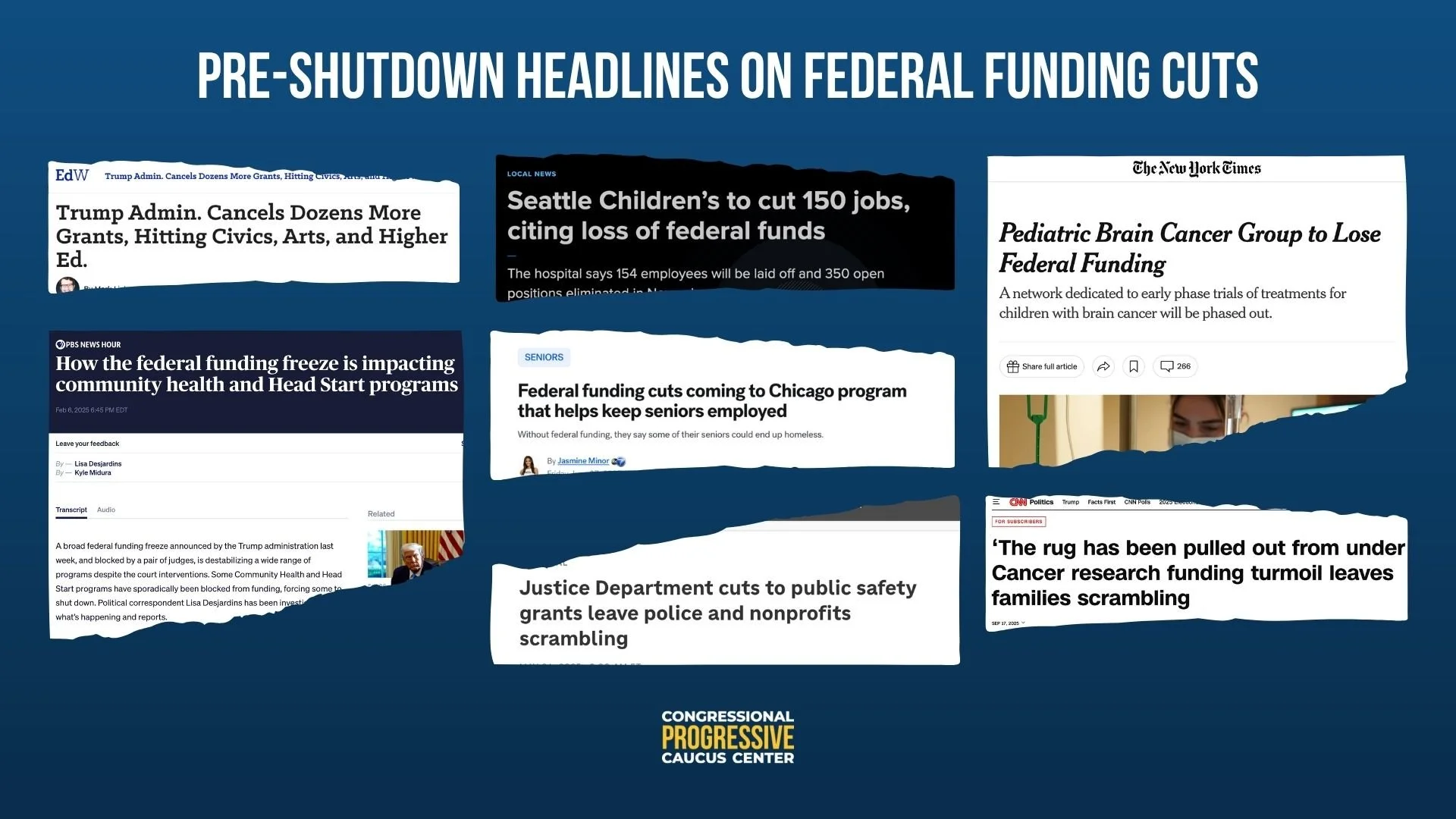10.7.25 - Why this shutdown is not like the others
The federal government has been closed for almost a week, and there’s no end in sight. While this shutdown would have to last another four weeks to tie for the longest-ever at 35 days, the past week has been notable in its own ways—more on that below.
What’s typical during a shutdown?
Some things are expected when the government shuts down. Federal government functions halt—with limited exceptions—and federal employees are furloughed or forced to work without pay if they are considered essential to fulfilling ongoing government functions, like those required to maintain public safety.
All of this can delay government services people depend on, on top of the hardships for federal workers who miss paychecks if a shutdown persists. For examples and FAQs about shutdowns, see our September 30 update. For a tracker of events related to this particular shutdown, check out ShutdownReport.com.
What’s not typical during a shutdown?
Despite the pain shutdowns can bring for the American people, Trump administration officials and Republicans in Congress have spent the past week talking up the possibilities they feel a shutdown presents. They’ve said that the shutdown offers an “unprecedented opportunity” to gut services the government provides and fire federal workers en masse, suggesting that White House operatives have “been dreaming about this moment.”
Indeed, the White House used the shutdown’s first day to block federal funding for infrastructure projects, focusing the bulk of those cuts on Democratically-controlled states. And now the White House has now suggested that federal workers are not entitled to backpay when the government reopens, despite a 2019 law guaranteeing just that.
What’s most noteworthy here isn’t necessarily the obvious politicization of the shutdown: it’s that these developments aren’t that different from what the Trump administration has already been doing throughout this year.
Right around now, we’d typically expect reports about how the government shutdown is affecting communities and which programs and services may halt as federal funding runs dry—and that is happening. But take a look at the headlines below, all of which pre-date the shutdown:
The upshot
The Trump administration has been cutting communities off from federal funding they’re owed throughout this year, jeopardizing jobs, preschools, public safety, cancer research, and much more—in effect shutting down things the federal government does for Americans, even when the government was officially “open.”
This is not to say the current shutdown is meaningless. Again, critical functions will come to a halt and Americans who work for the government will be forced to make ends meet while missing paychecks.
But the examples above do indicate this moment’s unique stakes. They show the extent to which this administration has seized power and wielded that power to hurt communities—and, accordingly, the need for Congress to put a check on that power. The top Democrats on the House and Senate Appropriations Committees have proposed a government funding bill to do just that: reopen the government, address the health care cost hikes looming for 22 million Americans, and stop the President from stealing communities’ resources.
Put differently: their proposal would help prevent headlines like the ones above, whether we’re in a shutdown or not.
If you’d like a live update for your group or coalition, reach out to catherine@progressivecaucuscenter.org. Thanks!

